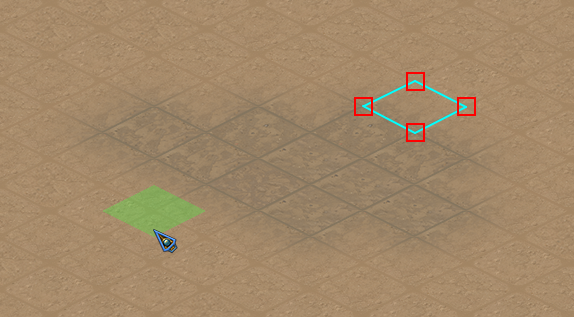Difference between revisions of "Grid - atom description"
Jump to navigation
Jump to search
| Line 19: | Line 19: | ||
|water_repellent || bool || false || Water repelent tiles cannot be irrigated by no means. | |water_repellent || bool || false || Water repelent tiles cannot be irrigated by no means. | ||
|- | |- | ||
| − | |features || vec_1D'''[atom'''['''Grid_Feature''']]''' || obligatory || List of grid features. | + | |features || vec_1D'''['''atom'''['''Grid_Feature''']]''' || obligatory || List of grid features. |
|- | |- | ||
|surface_representant || atom'''['''Grid''']''' || null || Grid atom which is used, instead of this atom, for determination of Surface type. | |surface_representant || atom'''['''Grid''']''' || null || Grid atom which is used, instead of this atom, for determination of Surface type. | ||
Revision as of 11:40, 15 April 2021
General description
- Grid atoms represent type of terrain on a vertex of any tiles.
- They do not hold graphical representation.
- Surface atoms hold the graphical representation, but used Surface atom is determined by Grid atoms in its four vertices.
- Grid type can be set/changed in map editor by appropriate editor tool.
- In the image above you can see single Surface in the cyan rhombus and its four Grid in the red rects.
- Left and bottom Grit atoms are of type soil and top and right are of type desert, so the result Surface atom is transition from soil to desert.
Properties description
| Name | Type | Default value / Obligatory |
Description |
|---|---|---|---|
| name | locale string | obligatory | Name of the grid type. Shown only in map editor. |
| water_power | int | 0 | Determines how big is the surroundings in which this tile can irrigate other tiles. |
| water_repellent | bool | false | Water repelent tiles cannot be irrigated by no means. |
| features | vec_1D[atom[Grid_Feature]] | obligatory | List of grid features. |
| surface_representant | atom[Grid] | null | Grid atom which is used, instead of this atom, for determination of Surface type. |
Properties in detail
supported_subsoils
- Each Grid can support multiple "subsoils".
- Each subsoil is determined by single letter.
- These subsoils are then used to determine is specififc buildings is allowed to be built on a specific place.
- For example soil and desert have both type
G(as a ground) and that means that standart buildings can be built on them.
surface_representant
- Sometimes you can have multiple Grid atoms which are different is some properties, but which do not influence which Surface should be used with them. For example soil without water power and soil with water power in base mod.
- In such cases is best to choose one of them as a representant because it reduces number of required surface atoms.
Example
atom ('grid.soil',
{
name = "@grid.soil",
supported_subsoils = "AGF",
})
atom ('grid.soil.water',
{
name = "@grid.soil.water",
supported_subsoils = "AGF",
water_power = 3,
surface_representant = 'grid.soil';
})
